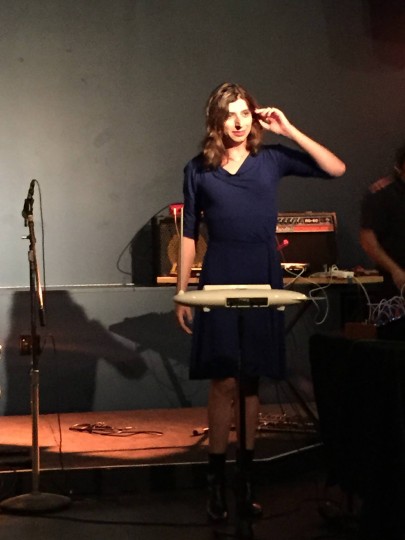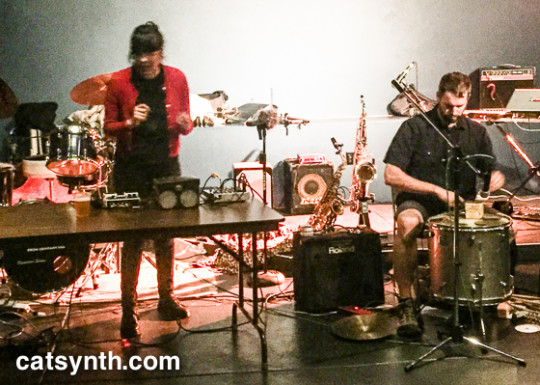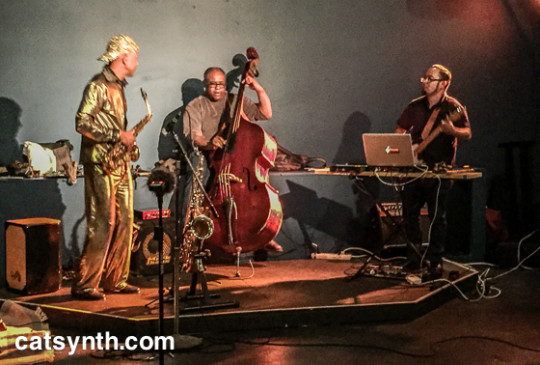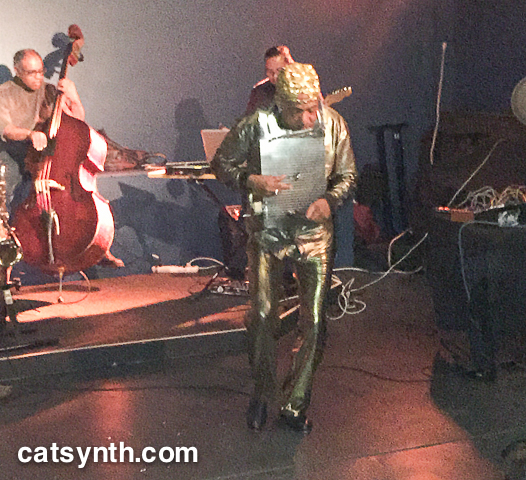Today we look at a recent performance by Amy X Neuburg at the Center for New Music featuring a new interpretation of Jerry Hunt’s “Song Drapes.” This project was part of commission Neuburg received from the Cultural Department of Cologne, Germany to reinterpret the piece, which was originally a collaboration between Hunt and the performance artist Karen Finley.
We at CatSynth are immersed in a world of unique and often odd artists. But Jerry Hunt stands out as exceptionally odd and enigmatic. The evening began with screenings of his video work that is rarely shown in public. Many of them featured the artist alone in a dark room with his strange homemade electronic controllers and bits of electronic sound.

There were other departures among his videos, including one powerful piece featuring a close-up of Hunt reciting what seems like a stream of random but intense thoughts; and other where he takes the viewer on a tour of his home in Texas pointing out the behavior of local wildlife and a customized homebrew toilet. Both of these pieces seemed to portend his tragic death by suicide while suffering from cancer. But there were also humorous at times.
A similar mixture could be found in Neuburg’s live performance, which followed the screenings. “Song Drapes” includes Hunt’s original electronic background recordings and instructions to the performer to perform text of his or her own choosing with a live percussion rhythmic layer. The elements of electronics, percussion and voice were a perfect match for an “Amy X Neuburg treatment.”

The result was unmistakably her sound and style, filled with rhythmic hits, dramatic vocals and delightfully sardonic texts. Some were quite dark in keeping with the original work, but some of the best moments were the most quirky and humorous, including a tribute to Nebraska as the place one often flies over between frequent trips between California and New York (something which is part of my life as well), and her dance to a catchy rhythmic tune entitled “Little Legs”.
The performance lasted exactly one hour, but was engaging throughout. I am glad to have attended it. I do also hope to see more exposure for Jerry Hunt and his work. You can read more about him here. You can also find out more about Amy X Neuburg’s interpretation






















